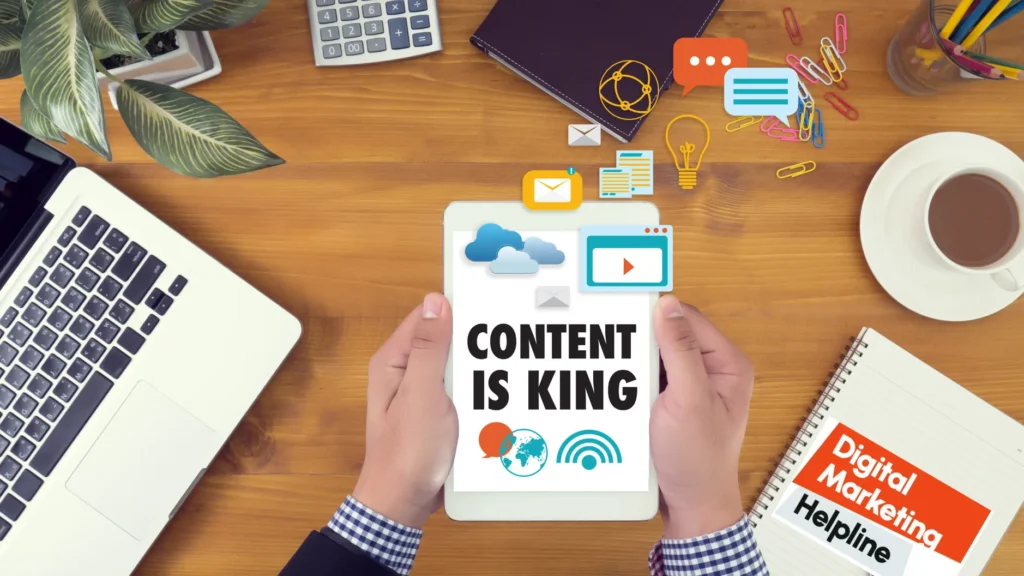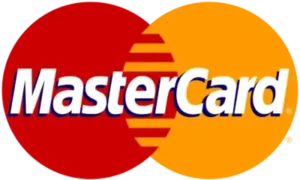
Introduction
Welcome to the Digital Age where visual content is King.
Capturing and keeping an audience’s attention has never been a more difficult task. In most aspects of life, one is bombarded with a mountain of information requiring the person to sort through it all. This is where the power of visual content can shine. In digital communication, a powerful form of human language captivates or conveys more messages through images, videos, infographics, among others, do just that.
Defining Visual Content
According to Oberlo, visual content is a type of content that uses images, graphics, and/or videos to present information, trigger emotions, and get people talking. Defined as any type of visual digital media, visual content is the backbone of any digital experience. An image, illustration, photograph, or video can grab people’s attention in ways that text content simply cannot.
Brief Overview of the Importance and Impact
In a world where attention spans are fading and the fight for engagement is more fierce than ever before, visual content has emerged as the king of communication. Its ability to deliver complicated ideas fast, emotions, and personal engagement make it essential for marketers, businesses, and content creators. This article discusses the visual content revolution and why it has become the basis of effective communication in the digital era.
In the following discussion on visual content, we will expose more about its abilities to capture attention, strengthen the brand’s presence, and stimulate relationships. Walk with us through this journey of the visual information revolution to get the motivational insights compelling its importance to a digital marketing campaign.
The Power of Visual Content
Definition and Types of Visual Content
Visual content encompasses various media formats designed to engage and communicate with audiences visually. These include:
Images: Photos, illustrations, and graphics that convey information or evoke emotions.
Videos: Dynamic, interactive content that captures attention and delivers messages through motion and sound.
Infographics: Visual representations of data, statistics, or processes presented in a clear and engaging format.
Memes and GIFs: Humorous or relatable visual content that spreads quickly through social media and online communities.
Each type of visual content has a unique purpose and can be customized to suit different communication goals and audience preferences. Each type of visual content has a unique purpose and can be customized to suit different communication goals and audience preferences.
Statistics on the Effectiveness of Visual Content
A wealth of research and data supports the effectiveness of visual content in engaging audiences. Consider the following statistics:
– It is noteworthy that posts on social media platforms that include images receive 650% higher engagement than text-only posts. This highlights the importance of incorporating visual content into social media strategies to increase engagement and drive better results.
– When a message is conveyed through video, viewers tend to retain 95% of it. In contrast, when the same message is presented in text format, the retention rate drops to 10%.
– Tweets that contain images are retweeted 150% more often compared to tweets that do not have pictures.
– Articles with appropriate images get 94% more views than those without images.
These statistics highlight the significant impact that visual content can have on audience engagement, retention, and brand recall.
The Psychology Behind Visual Storytelling
This is why visual content is so effective— it works on the fundamental principles of human psychology. Most of us think in pictures, which is why our brains can process images so much more quickly and more straightforwardly than once. And if an image can make your target audience feel something, well, therein lies the magic.
Visual storytelling, in particular, leverages the emotional impact of visuals to convey messages, spark empathy, and inspire action. By crafting compelling narratives through images, videos, and other visual elements, marketers can forge stronger connections with their audiences and drive meaningful engagement.
In summary, the power of visual content lies in its ability to captivate, communicate, and connect with audiences on a visceral level. By harnessing the unique strengths of visual media, marketers can create compelling experiences that leave a lasting impression and drive desired outcomes.
Importance of Visual Content in Engaging Audiences
Capturing Attention in a Crowded Digital Landscape
Nowadays, with the proliferation of content and shortening of viewers’ attention span, it is particularly difficult to capture and hold people’s attention. Visual content is a great way to avoid falling into the background and capture viewers’ attention as they turn to a social media feed or browse a website. Amazing images, exciting videos, and gorgeous graphics can grab peoples’ attention as they scroll past and draw them over to learn more about your brand or message.
Enhancing Brand Identity and Recognition
Creating a brand identity: As already mentioned, colors and fonts have their meanings that attract clients. In addition to this, the visionary aspects of the project can make a significant influence on making the brand recognizable. Using the same color palette, the same fonts and generally the same looks of the images, people could quickly recognize that this is your brand. For example, the same logo in the left corner will make them realize that this is your image.
Increasing Audience Engagement and Interaction
The most important advantage of visual content over plain text is the opportunity to achieve better results in terms of engagement and interaction. Visuals cause strong emotions and are more often shared and commented on by users. It allows developing a more profound relationship with audiences through meaningful discussion. Such examples could be spectacular photos, funny video clips, warm human stories, scary recordings that leave no one indifferent, or enlightening and encouraging infographics.
In summary, visual content is vital in engaging audiences in today’s digital landscape. By capturing attention, enhancing brand identity, and driving interaction, visual content helps brands connect with their target audience meaningfully, ultimately driving awareness, loyalty, and conversions.
The Role of Visual Content in Digital Marketing

Visual Content is King: Visual Content Across Different Digital Platforms
Visual content is king, it is ubiquitous across various digital platforms, serving as a cornerstone of effective digital marketing strategies:
Social Media: Platforms like Facebook, Instagram, and Pinterest thrive on visual content. Marketers leverage eye-catching images, engaging videos, and interactive graphics to grab users’ attention and drive engagement.
Websites: Visual content plays a crucial role in website design, helping to create visually appealing and user-friendly experiences. From homepage banners to product images, visual elements are used strategically to convey brand messaging and guide users through the customer journey.
Email Marketing: Adding visual elements to email marketing campaigns can significantly enhance the number of people who open and click through the emails. From attention-grabbing header images to visually appealing product showcases, visual content improves the effectiveness of email communication and encourages recipients to take action.
Examples of Successful Visual Content Marketing Campaigns
Numerous brands have leveraged visual content effectively in their digital marketing campaigns, achieving remarkable results:
Dove’s Real Beauty Campaign: Dove’s use of authentic, empowering images challenged traditional beauty standards and resonated deeply with its audience, sparking meaningful conversations and driving brand loyalty.
Red Bull’s Extreme Sports Videos: Red Bull’s action-packed videos showcasing extreme sports and adrenaline-fueled stunts captivated audiences worldwide, reinforcing the brand’s image as adventurous and daring.
Nike’s Do It Campaign: Nike’s iconic visuals featuring inspirational athletes and powerful messages have become synonymous with the brand, inspiring millions to push their limits and pursue their passions.
Visual Content is King: Tips for Creating Compelling Content
If you want to create visual content that engages and connects with your audience, here are some tips to keep in mind:
Know Your Audience: Creating visuals that resonate with your target audience on a personal level requires understanding their preferences, interests, and behaviors.
Tell a Story: Visual storytelling is a powerful way to emotionally connect with your audience while communicating your brand’s messaging and values.
Maintain Consistency: Ensure consistency in visual style, branding elements, and messaging across all digital platforms to reinforce brand identity and recognition.
Optimize for Mobile: Optimize your visual content for mobile devices to ensure a seamless user experience, as most internet users access content on mobile.
In summary, it is significant to note that visual elements are a critical component of digital marketing since they are capable of grabbing the consumers’ attention, communicating brand identity, and influencing their experience. This exploration explains how and why visuals are important and the ways that marketers can use them meaningfully to generate worthwhile business outcomes across every digital medium. Social engagement and brand awareness can just first be fostered better through a planned application of visuals.
Visual Content is King: Harnessing the Potential of Visual Content
Properly Enhancing Information for Visual Appeal
Designing for web and mobile, as well as creating appealing graphic content, implicates following certain rules and showcasing certain aesthetics. Consider the following best practices:
Focus on Quality: Always use high-quality images, videos or animations and graphics that are related to your line of business because this will create credibility in the market. Select images, which could be of low quality or produced inappropriately, so that they can disturb the overall perception.
Keep it Simple: Avoid having a lot of stuff around such that one is able to know what you want to express without confusion. Adopt a minimalist approach by minimizing the screen clutter and employing clean line; use a lot of white space and stick to a color scheme to make it easier for users to interpret content displayed on screens.
Use Visual Hierarchy: Organize the placement of objects to determine the order and the areas that are perceived first to highlight the information or action one wants the audience to take. To achieve accessible design ensure the contrast, scale, and positioning of the object to provide a ladder of hierarchy to guide the attention of the user to key pieces of information.
Ensure Accessibility: There are a few guidelines how to make this content accessible for all users: use color contrast, visibility of fonts, and descriptions for images. Make sure that your visuals are accessible for a disabled audience to interpret and comprehend.
Visual Content is King: Tools and Resources for Designing and Editing Visual Content

There is a plethora of tools and resources available to help marketers create and edit visually stunning content:
Graphic Design Software: Programs like Adobe Photoshop, Illustrator, and Canva offer powerful tools for creating custom graphics, illustrations, and designs.
Video Editing Software: Software like Adobe Premiere Pro, Final Cut Pro, and iMovie allow users to edit and enhance video content with professional-level features.
Stock Image and Video Libraries: Websites like Shutterstock, Unsplash, and Pexels provide access to a vast library of high-quality images and videos for marketing campaigns.
Social Media Design Apps: Apps like Over, VSCO, and Snapseed offer intuitive tools for creating eye-catching social media graphics and enhancing photos for digital marketing purposes.
Incorporating Visual Content into Your Digital Marketing Strategy as visual content is king
To fully utilize the power of visual content in your digital marketing strategy, consider the following tips:
Align with Brand Identity: Ensure that your visual content aligns with your brand’s identity, values, and messaging to maintain consistency and build brand recognition.
Tell Compelling Stories: Use visual content to tell stories that resonate with your audience emotionally, fostering deeper connections and engagement.
Optimize for SEO: Optimize your visual content for search engines using descriptive filenames, alt text, and captions that include relevant keywords and phrases.
Track and Analyze Performance: Monitor the performance of your visual content using analytics tools to understand what resonates with your audience and optimize future content accordingly.
By following these best practices and leveraging the right tools and resources, marketers can harness the full potential of visual content to create engaging, memorable, and impactful digital experiences for their audience.
Visual Content is King: Case Studies- Success Stories
Airbnb’s Instagram Storytelling
Airbnb has mastered the art of visual storytelling on Instagram, using stunning imagery to showcase unique travel experiences and destinations. By featuring user-generated content from hosts and guests, Airbnb creates authentic and aspirational narratives that inspire wanderlust and drive engagement. Through carefully curated visuals and compelling captions, Airbnb has built a strong community of followers who actively engage with and share their content.
GoPro’s User-Generated Content Campaigns
GoPro’s visual content marketing strategy revolves around user-generated content, leveraging its customers’ adventurous spirit and creativity to showcase its action cameras’ capabilities. Through initiatives like the “Photo of the Day” and “Video of the Day” contests, GoPro encourages users to share their epic adventures captured on GoPro cameras. By amplifying user-generated content on its website and social media channels, GoPro creates an authentic and immersive brand experience that resonates with outdoor enthusiasts worldwide.
Coca-Cola’s Share a Coke Campaign
Coca-Cola’s “Share a Coke” campaign is a prime example of visual content driving engagement and personalization. By replacing its iconic logo with famous names and phrases on its packaging, Coca-Cola created a unique and highly shareable visual experience. The campaign encouraged consumers to find and share bottles with their names or those of friends and family, driving social media buzz and user-generated content. Through visually striking packaging and personalized messaging, Coca-Cola succeeded in strengthening brand affinity and fostering connections with its audience.
These case studies demonstrate the power of visual content marketing in driving engagement, building brand loyalty, and fostering community as visual content is king. By leveraging compelling visuals, authentic storytelling, and user-generated content, brands can create memorable experiences that resonate with their audience and drive meaningful business results.
Future Trends and Opportunities in Visual Content Marketing
Interactive and Immersive Experiences
As technology advances, we can expect to see more interactive and immersive visual content experiences. Virtual and augmented reality technologies provide brands with exciting opportunities to create immersive experiences that transport users to new worlds and engage their senses in new and exciting ways. Whether virtual product demonstrations, interactive 3D tours, or augmented reality filters, brands can leverage these technologies to create memorable experiences that drive engagement and foster deeper connections with their audience.
User-Generated Content Curation
Visual content marketing strategies will continue to rely heavily on user-generated content (UGC). Brands will increasingly focus on curating and amplifying UGC, leveraging the authenticity and relatability of content their customers and followers create. By featuring user-generated content on their websites, social media channels, and marketing materials, brands can build trust, foster community, and drive organic engagement.
Personalized Visual Experiences
In the future, personalization will become the norm for visual content marketing. By analyzing increased volumes of data and relying on artificial intelligence, brands will soon make it possible to cater to the unique behavioral patterns and preferences of each user and offer them a completely new level of personalized visual experience.
Imagine recommendations featuring dynamically created visuals for products or original video messages created in just a few clicks or taps – brands can now create personalized visuals with higher interactive potential.
Sustainability and Ethical Design
As environmental and sociological issues have become more saturated over the years, consumers expect sustainability and ethics from brands. Brands, in turn, have integrated sustainability and ethical design principles into their visual content marketing strategies to meet these requirements.
Brands utilize eco-friendly elements, thematic diversity and inclusivity, and social responsibility disclosure to narrate visual stories. Brands that center their values and priorities around consumer expectations have gained not only consumer confidence and a positive reputation but also a more socially conscious consumer base.
Integration of Voice and Visuals
We have noted that as voice technology remains relevant, it will be enhanced to include even the visuals in content marketing plans. Voice-activated interfaces will continue to emerge as another evolution in interaction, allowing brands to develop strategies for pairing them with images for increasing ease and simplicity.
From navigation of visually presented content through a voice-activated interface, or voice-activated, visually responsive content, brands can use this integration as a means of improving the accessibility, ease of use, and overall interaction rates for consumers.
In conclusion, one needs to state that visual content marketing is promising and opens great possibilities for further developing and creative ideas. Specifically, to pursue value creation through visual content strategy, brands must seek out innovative platforms, empower personalization and sustainability, and leverage voice and visuals that speak to the target consumers and ultimately generate results.
Conclusion
Evidently, visual content is the king of communication in the digital space today. Nothing resonates with audiences quite as uniquely and attractively as visual materials, which empowers organizations and content creators to leave the most powerful impression on them. The current blog post revealed that visual content should be prioritized to achieve the highest levels of engagement, identity, and connection with target consumers.
Visual storytelling, ranging from breath-taking visuals and gripping videos to interactive experiences and user-generated content, can elicit emotions, send messages, and alter perceptions in ways that words alone cannot. Brands can create unforgettable moments with and compel customer behavior by developing unique user experiences and content that attract and resonate with their target demographics.
The future is bright with regard to the opportunities of visual content marketing. The development of new technologies, such as virtual and augmented reality, as well as personalization and increased sustainability, propose approaches for brand-new realms of imagination. By pushing the boundaries and permitting a few of these veers to shape up or develop more, brands may continue to craft their visual concepts in a way that influences people for the better.
In a world where attention is at its lowest and competition is at its highest, visual content continues to be one of the strongest ways to differentiate yourself, be remembered, and be felt in a distinctive manner that eventually leads to forging meaningful relationships with your audience. Follow this guide, embrace your brand’s identity, keep it real, and always seek to create experiences that go beyond superficial impact and strike the heart chords with your audience.
Thank you for joining us on this exploration of the visual content revolution. Now, we can conclude that visual content is king. May your future endeavors be filled with creativity, inspiration, and success in harnessing the power of visual storytelling.













